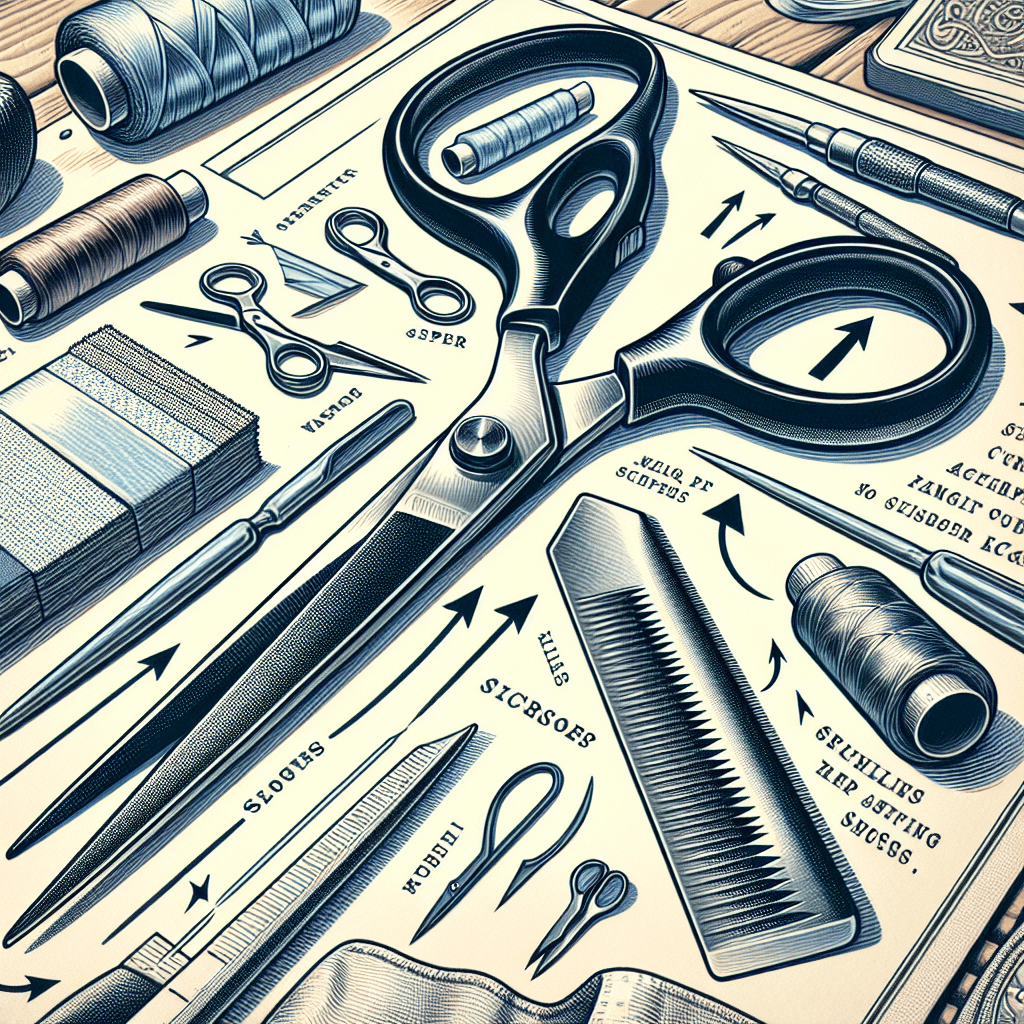Why do many pairs of scissors have a serrated notch near the handle
That jagged notch on your scissors isn't a design flaw—it's a secret multi-tool you've been overlooking this whole time.


Too Long; Didn't Read
TLDR: The serrated notch on scissors is a multi-tool feature for gripping and cutting wire, stripping insulation, or opening bottles.
The Tool You Never Knew You Had: Why Do Many Pairs of Scissors Have a Serrated Notch Near the Handle?
Take a moment and grab the nearest pair of multi-purpose or kitchen scissors. Now, open them up and look closely at the blades, not at the sharp cutting edge, but further back, near the central pivot where the two halves meet. Do you see it? A small, semi-circular cutout with tiny, jagged teeth. This isn't a manufacturing defect or a mere design flourish. It's a deliberately engineered feature with a specific set of functions that transforms your simple scissors into a versatile multi-tool. For years, this serrated notch has been one of the most overlooked yet useful components of a common household item. This post will demystify this feature, explaining exactly why it’s there and how you can use it to its full potential.
Unpacking the Design: The Anatomy of a Multi-Tool
Before we dive into its functions, it's important to understand what we're looking at. The feature in question is officially known as a wire-stripping notch or wire cutter. Its location is critical to its function. By placing it between the handles and the main cutting blades, designers take advantage of the simple physics of a lever. The pivot of the scissors acts as a fulcrum, and the handles are the levers. The closer a task is to the fulcrum, the more force you can apply with the least amount of effort. This positioning allows the notch to perform tough jobs without requiring immense hand strength, and more importantly, without damaging the finely honed cutting edges of the main blades.
The Primary Functions of the Serrated Notch
This small feature is a true workhorse, designed to handle tasks that would otherwise chip, dull, or ruin the primary cutting blades. While its specific capabilities can vary slightly by brand, the notch generally serves three main purposes.
1. Wire Stripping and Cutting
This is the notch's most common and intended function, particularly on utility scissors. The small serrations are designed to grip the plastic or rubber insulation on a small-gauge electrical wire. By clamping down gently and rotating the wire, you can score the insulation cleanly without cutting the delicate copper strands inside. You can then slide the insulation off. For softer wires, like floral or craft wire, the notch also serves as a dedicated cutter. Applying pressure here concentrates force, allowing you to snap the wire cleanly while preserving your main blades for paper, fabric, and other soft materials.
2. Opening Bottles and Jars
On many kitchen shears, this notch is slightly larger and more robust, designed to function as a gripper. The serrated teeth can latch onto the ridges of a stubborn twist-off bottle cap, giving you the extra torque needed to break the seal. Some designs even incorporate a flat, sturdy section near the handle that can be used as a traditional bottle opener for pop-top caps. The same gripping principle can be applied to small, hard-to-open jar lids, making kitchen shears an indispensable gadget.
3. Cracking Nuts and Shells
Less common, but still a feature on heavy-duty kitchen shears, the notch can be used as a built-in nutcracker. The powerful leverage near the pivot is perfect for cracking smaller nuts like walnuts or pecans, or even for tackling tough jobs like cracking open crab legs or lobster shells. The serrations help hold the object securely in place, preventing the dangerous slippage that might occur if you tried the same task with the main blades.
Not All Scissors Are Created Equal
It's crucial to note that you won't find this feature on every pair of scissors. Specialized tools designed for a single, precise purpose will omit it entirely.
- Fabric and Sewing Shears: These require a perfectly smooth, uninterrupted blade to make clean cuts through cloth. A notch would snag and ruin the fabric.
- Hairdressing Scissors: Precision and a flawless edge are paramount for cutting hair. Any imperfection on the blade is unacceptable.
- Surgical Scissors: These are highly specialized medical instruments where sterility and precision are the only concerns.
The serrated notch is the hallmark of a multi-purpose or utility tool, signaling that the scissors were designed to be a versatile problem-solver for a variety of everyday tasks.
Conclusion
That small, serrated notch on your scissors is far more than just an interesting detail. It is a testament to thoughtful, functional design, adding a layer of utility that protects the tool's primary function while expanding its capabilities. By providing a dedicated spot for stripping wire, opening bottles, or cracking shells, it preserves the sharp blades for the delicate cutting they were made for. So, the next time you’re faced with a stubborn bottle cap or a quick wiring fix, don't rummage through your toolbox. Take a closer look at the scissors in your drawer—you might just find you already have the perfect tool for the job.


